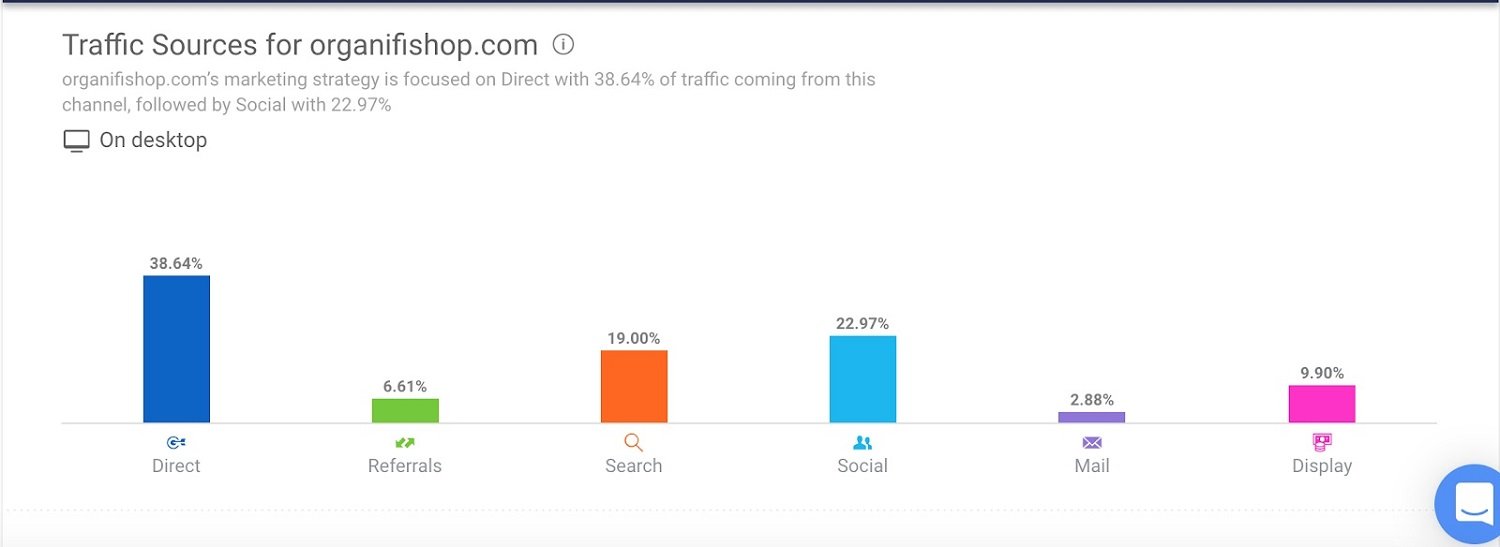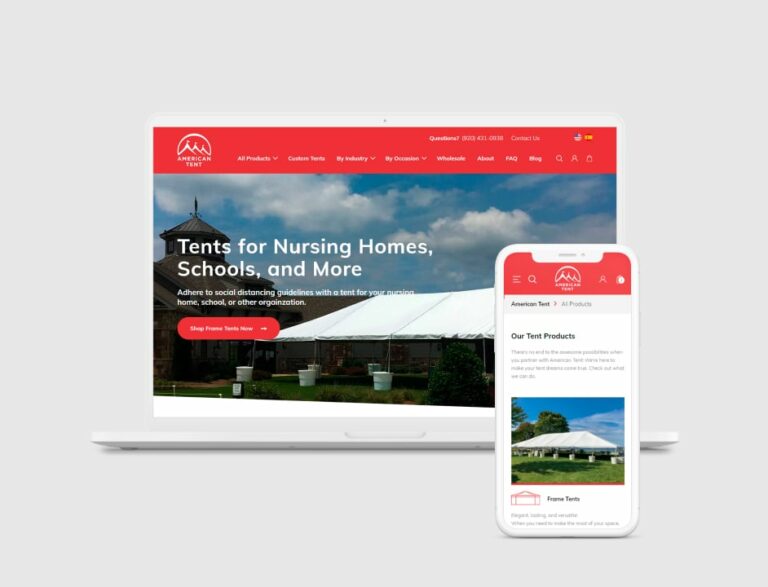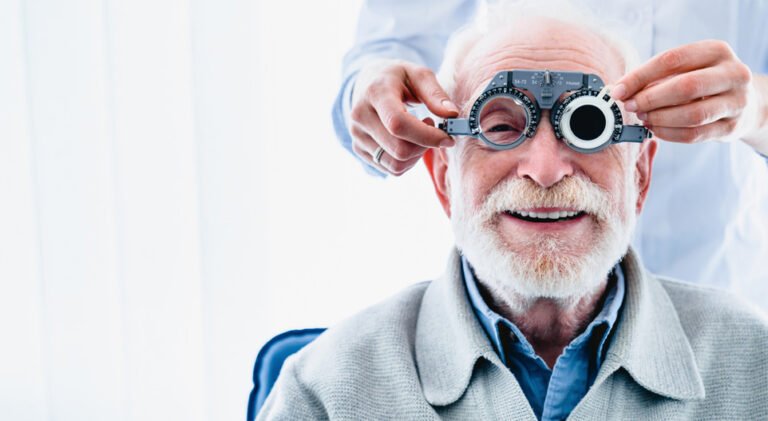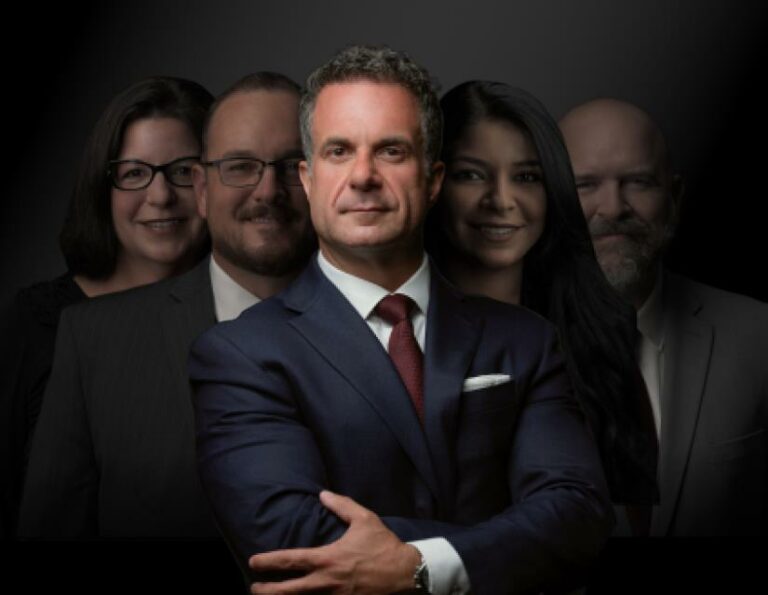
On-Page SEO, aka “Search Engine Optimization,” is absolutely essential for rising in the search rankings (aka SERP) and helping more potential customers discover your brand, products, and services.
What Is On-Page SEO?
In essence, the importance of on-page SEO lies in optimizing individual web pages for higher rankings in search engine results pages (SERPs). This entails enhancing both content and HTML source code, encompassing elements such as meta descriptions, title tags, and image optimization. Conversely, off-page SEO encompasses strategies like link building and influencer outreach.
When most people refer to SEO, on-page SEO is what they really mean, even though there are many other components in a comprehensive SEO service package. Search engines like Google, Bing, and Yahoo interpret your web pages much like visitors exploring your physical shop. Just as an organized store layout enhances the shopper experience, proper on-page optimization ensures an appealing experience for search engine crawlers.
Imagine search engines as scouts guiding potential shoppers to your online store. If your shop, or in this case, your website, is disorganized and lacks proper on-page elements like structured data and high-quality content, it’s unlikely to attain a high rank in search engine results.
This guide covers the basics of on-page SEO optimization and delves into more technical aspects to elevate your page rankings. With a firm grasp of these principles, you’ll harness the power of on-site SEO to cultivate a robust online presence, cater to user search intent, and attract higher website traffic.
Basic On-Page SEO
To fully understand the importance of on-page SEO, you must grasp the significance of meta tags – snippets of text embedded in a page’s source code that describe its content. Although these meta descriptions don’t manifest as visible text on the actual page, they directly communicate with search engines, clarifying a web page’s purpose. On-page SEO is crucial in conveying what a given web page is about, making it vital for search engine rankings. Among these meta tags, the most critical are title tags and meta descriptions, which optimize a web page for better search visibility and align with search intent.
Delivering Business Results: Our Digital Marketing Case Studies
Page Title Optimization (aka Meta Title)
Your site’s page title is the HTML <title> tag in the <head> of your page. Remember, this isn’t just a title on the actual “homepage” of your website, it’s actually not particularly visible to visitors to your website (it’s displayed on the top “tab” of your web browser. Here’s an example:

Even though your customers likely won’t notice it, on-page SEO remains a crucial factor influencing your search engine ranking. Search engines will utilize your title tags for the link text in your search results. If you’re the owner of RicksKites.com but fail to configure your meta title accurately, not only will your customers be confused when they discover your website through search, but Google and other search engines will penalize you substantially, impacting your organic rankings when individuals search for kite stores.
Here’s what a page title and meta description (we’ll delve further into this shortly) should resemble in Google search results:

The keywords you employ in your title tags – and yes, this applies to every web page on your site – hold paramount importance, given that search engines utilize them in organic rankings. Crafting remarkable page titles can potentially secure strong rankings for numerous target keywords, effectively guiding your ideal customers to your platform.
| Bad Titles | Why They’re Bad | Good Titles | Why They’re Good |
| “Amazing Product” | Vague and lacks specificity. | “10 Benefits of Our Amazing Product” | Clearly communicates what the article is about. |
| “The Best Ways to Cook” | Too broad and lacks focus. | “Mastering Culinary Techniques: The Best Ways to Cook” | Specifies the topic and adds an intriguing element. |
| “Important Tips” | Generic and doesn’t offer information. | “5 Important Tips for Financial Success” | Provides a clear benefit and context for the reader. |
Here are the things you need to keep in mind in order to optimize your Shopify meta title for SERP. Your title must:
Be Unique
That’s right, you can’t copy and paste the same exact page title for multiple pages in your store. If pages with different content have the exact same meta title, they may be viewed by search engines as duplicates of one another… and therefore only one of them may be listed.
Be Descriptive of Your Page
Search engines are smart, and that’s why on-page SEO is crucial. They require your title tag to precisely define the content users will find upon clicking the link. Simply stuffing your title with unrelated keywords in the hopes of boosting Google rankings won’t suffice. It’s imperative to construct a title that accurately conveys what users can expect from your web pages. This is the essence of on-page SEO analysis and optimizing web pages to enhance search visibility and cater to search intent. The strategic use of relevant keywords, alongside prudent internal linking and avoiding keyword stuffing, makes on-page SEO a pivotal aspect of technical SEO and a very important ranking factor.
Front Load Your Title with Keywords
Use the specific keywords you want to rank for as the first words in your title. In the example above, the Kraff Eye Institute front-loaded their title with “Lasik Chicago” to rank for those keywords.
Contain Numerous Valuable Keywords
Put yourself in your target consumer’s shoes. Outside of searching for your actual brand name, what keywords would they use when searching for the kind of products you provide? Try to avoid using overly broad keywords, and make sure the words you’re using are ones people are actually typing into search engines. This is a bit of both an art and a science and might take some trial and error.
Be the Right Length
The importance of on-page SEO is underscored by various factors, including search intent, structured data, and inbound links. Crafting an effective page title, which forms an integral part of on-page optimization, requires a strategic balance. Aim to keep it under 70 characters to evade truncation by search engines, while remaining informative. Achieving this balance not only prevents word cutoff but also potentially optimizes for target keywords and search traffic. Should you manage to artfully weave other relevant keywords into a slightly extended title without compromising readability, it might bolster your search visibility and overall ranking within the competitive landscape of on-site SEO.
Have One Per Page
Although you might be tempted, make sure there’s only one title in the head of each web page. Using multiple titles will either put you at risk of being ignored or of the search engine arbitrarily selecting one for you.
Description Optimization
When looking at search results for your store online, a paragraph will show up after the title. This is the meta description. In more technical terms, if you’re looking at the <head> of your webpage html, the description is the <meta name=”description” content=””/> HTML tag in the <head> of a webpage. These descriptions will also show up when sharing your website on social platforms. For reference again, here’s what a meta description looks like:

There are a number of things to think about when optimizing your description, but most of all, you want to make it compelling. After all, you want potential clients to really want to click on your link if they stumble across your site in search results! This is your “elevator pitch” to users. If it’s just a jumbled description over-stuffed with keywords, you may end up driving people away rather than reeling them in.
Examples of meta descriptions:
- Boost your online visibility with expert SEO strategies. Learn the latest tips and techniques for effective search engine optimization.
- Drive organic traffic and improve search rankings with our comprehensive SEO guides. Stay ahead in the digital landscape!
- Unlock the power of SEO to enhance your website’s performance. Explore SEO best practices and stay competitive online.
- Master the art of SEO and dominate search engine results. Elevate your online presence with proven SEO tactics.”
- Get the SEO insights you need to thrive online. Stay updated with the latest trends and tools in search engine optimization.
In addition to that, there are several other on-page SEO factors to keep in mind with regard to your page descriptions. Your descriptions must:
Be Unique
Again, just like meta titles, you cannot use the same meta descriptions for multiple pages.
Describe the Page
Make sure your description accurately portrays the content on that SPECIFIC page, not the entire site.
Contain Good Keywords
While not one of the top-ranking factors, including good keywords in your description, is important, mainly for the reason that the keywords and phrases will turn bold if they match what the user is looking for. This will very likely increase your click-through rate and get more shoppers onto your Shopify site.
Length
As a general rule, keep your descriptions within 160 characters, because that is when most search engines will cut off your text.
No More Than One Per Page
Yes, the same rules apply as per your page title. You may be tempted to stuff multiple descriptions in your page <head>, but it will likely backfire on you.

Meta name stuffing ruins SEO by overusing keywords, leading to lower rankings and a poor user experience
If you want to get more in-depth with your meta tags optimization, here are all the meta tags that Google uses to rank your page:
Content Optimization for SEO
When it comes to making your page more appealing to potential customers and improving your SEO, it may sound cliche, but “content is king” still holds true. But when it comes to the content you generate, via blog posts, landing pages, and frankly every page on your website, there are some best practices to keep in mind for on-page SEO.
Headlines H2, H3, etc. – aka Headings and Subheadings
Why is on-page SEO important? Utilizing HTML headline tags like H1, H2, H3, and so forth across your supplement company SEO content is akin to creating mini title tags for search engines to explore throughout your site. These headlines and subheadlines should incorporate target keywords for which you aim to achieve rankings.
By doing so, you enhance the quality and clarity of your site, making it easily comprehensible for both visitors and potential clients. When it comes to choosing appropriate headings, conducting extensive keyword research within your industry is essential.
Text Structure
Properly designed pages, incorporating elements such as structured data and a well-defined URL structure, possess a clear organization that aids viewers in comprehending the content. Recognizing the importance of appropriate on-page factors for SEO, one understands that similar to how people scan text, search engines like Google also have their own method. This phenomenon, termed search intent, underscores the need for tailored content organization. Over time, search engines have become increasingly sophisticated in deciphering language nuances, emphasizing the necessity for exceptional content structuring.
Notably, on-page SEO refers to optimizing the content within your own site, which extends beyond keyword stuffing to encompass strategic utilization of alt text, engaging on-page content, and well-placed inbound links. By integrating these strategies, you can significantly enhance your site’s search visibility and overall ranking factor.
Use Your Target Keyword in the First 100 Words
This method is quite straightforward yet exceptionally impactful. All you have to do is integrate your target keyword within the initial 100 words of content on your site. Google assigns greater significance to keywords that appear early in your content, so incorporating your chosen keywords naturally and early can yield a substantial effect on aspects like organic traffic and search visibility. In addition, it’s prudent to contemplate LSI keywords, also known as “Latent Semantic Indexing.”
This pertains to other pertinent and related keywords that individuals might use in their search queries. For instance, if your focus is on the keyword “car,” relevant LSI keywords could encompass terms such as “automobile,” “road,” “driving,” and “tires.” Such strategic incorporation of related keywords can enhance the in-depth information offered by your content.
Use Internal Links
Internal linking can make a huge difference for your SEO. In essence, you’ll want to link from higher-authority pages on your website to other pages on your site that need a boost. You can use software like Ahrefs to determine which of your pages have the highest authority, and then link to the other pages, using hyperlinked applicable keywords, throughout your page.
Comrade Digital Marketing Agency can help you with the above if you’re unsure how to go about it. Schedule a free consultation.
Technical SEO
Creating SEO-Friendly URLs
Another significant factor in boosting your on-page SEO is your URL itself, as the keywords found within a URL are used to rank your page. Keep in mind, this goes not just for your domain name, but every page on your site.
In order to optimize the SEO-friendliness of your URLs, your URL should:
Be Descriptive
This may be obvious, but make sure the URL you choose for a page contains keywords that apply to that page specifically.
Separate Words with Dashes
Rather than smushing all the words together, be sure to separate words with dashes (-) and not underscores (_).
Mobile Optimization
Around half of global internet users access the web through mobile devices, underscoring the critical importance of optimizing your website for phones. Major website builders like WordPress, Shopify, Wix, and Squarespace offer tools for mobile optimization. However, if your site is fully customized, achieving this might present some challenges.
In addition to employing responsive web design to enhance your site’s appearance across platforms, there are several factors to address in your mobile design to ensure improved search visibility and organic traffic. These include optimizing site speed, refining HTML code, incorporating internal and external links, utilizing alt text for Google images, and providing in-depth information on relevant pages.
Don’t Use PopUps on Mobile
While you may be tempted to use them to gather as much data as possible, mobile popups are supremely annoying. They’ll lead to higher bounce rates on your site, which will damage your SEO.
Design for a Hefty Finger
Nobody likes tiny, impossible-to-click buttons on mobile. On the other hand, buttons that are too large can create issues with scrolling and frustrate your visitors. Try to find a happy medium.
Don’t Use Flash
Flash may not be available on certain phones, so it’s best to avoid using this plugin and stick to HTML5 if you want to create special effects on your site.
Page Speed Optimization
Page speed holds immense significance, particularly for mobile users, given the impact of hardware and connectivity challenges. Don’t overlook how short user attention spans are. To enhance page speed, consider shifting to a swifter hosting provider, minimizing reliance on third-party scripts, and curbing your page’s overall size.
Structured Data For SEO
Structured data typically refers to something called “Schema” or schema.org, which is a result of a collaborative effort between Google, Bing, Yandex, and Yahoo! to help publishers provide the most useful information to search engines to enhance the rich snippets that appear beneath the page title in search results. A great tool to add structured data to your site is Google’s Structured Data Markup Helper.
How to Improve Image Optimization on Your Site
Optimizing your images for SEO is something you may never have thought about, but it makes a big difference. Here are the factors you need to consider when optimizing your images.
Image Alt Tags
An Alt Tag, in simple terms, is an alternate description of an image on your site. A viewer can only see it if they hover their mouse over the image or if they’re using special software for the visually impaired.
These Alt Tags are used by search engines for two things – the ranking of the image itself in the “image search” and the ranking of the page the image is on.
Here are the things you need to keep in mind in order to optimize your Shopify image alt tags for SERP. Your title must:
Be Unique
As you can tell, this is a common theme. Just as with meta tags and titles, do not copy and paste your alt tags for every photo.
Be Descriptive
Aside from the SEO value it provides, the alt tags do serve a beneficial function for the visually impaired. Make sure your alt tag describes the photo accurately.
Contain Good Keywords
As long as it works within your description, using beneficial keywords for your brand and industry is key here.
Be No More Than a Sentence in Length
Write naturally, using commas, but keep it to a sentence length at most.
Size
Image size optimization is a little bit of a double-edged sword. You want your images to be high-res so that they look great on your Shopify site, but if your image files are too big, your site will load too slowly. As a general rule, it’s best to keep your image size below 70kb.
File Name (aka Title)
Before you even upload your image to Shopify, you should change the file name of the image to something SEO-friendly. You cannot change the file name of the image once it has been uploaded, so you’ll need to delete and re-upload any images on your site with non-descriptive file names. Remember, in a file name, you cannot use spaces between words, so use dashes (-) instead.
Progressive On-Page SEO Factors to Stay Ahead of the Competition
Position Zero on Google
Position zero, often referred to as the “featured snippet,” designates the distinctive block positioned atop the search results page. Its initial moniker, “quick answers,” underscores its purpose of promptly addressing user queries. SEO strategy plays a vital role in securing this coveted spot, involving elements such as on-site SEO, keyword density, and crafting content optimized with relevant keyword variations.
Its prominence is slated to surge, particularly with the escalating prevalence of voice search, where these featured snippets serve as Google’s responses to user searches. Notably, Google has streamlined its search results by exclusively integrating position zero outcomes into the featured snippet, enhancing search clarity and user experience within the broader site structure.
Here’s an example of a “position zero” search result:

As you can see, the ithemes.com answer has achieved the coveted position zero, which lends it a huge advantage in click-through rate and visibility.
How do you get position zero? The results are generated organically, so if you really nail all the other on-page SEO essentials, you’ll have an improved chance of ranking in position zero for your desired keyword(s). A few key things play a role in which content is used, including:
First Page Results
You don’t need to be in position one to get chosen as the featured snippet, but it’s essential to be in the first 5 results for a specific search.
Relevance
The information on your site has to be the correct answer to the question, and the information on your page must be relevant to the search term as a whole.
Good Formatting
If your answer is correctly and usefully formatted, Google will be more likely to display it.
Voice Optimization for Google
Voice search, while still not nearly as popular as Google or Bing, is continually getting more popular and will be especially important for local businesses in the near future. For a definitive guide on voice optimization for Google, click here.
Leverage SEO with Other Channels
If you really want more traffic, however, it’s going to take more than just basic on-page SEO to make a huge difference. It’s far more powerful to take a multi-channel approach by integrating other channels such as social, PPC (aka Google Ads), forums, outside referrals, and even email to pull potential clients to your site. Think of all of these ways users can access your site like a giant funnel. By taking an integrated approach, you’ll be able to draw more traffic to your site, therefore benefitting your organic rankings in the long run. For example, Organifi, a growing superfood supplement brand, epitomizes this approach perfectly. Take a look at their traffic results from SimilarWeb:

As you can see, they have a pretty diverse source of traffic, which is contributing in a holistic way to their growth – and improving their organic SEO as a result.
You can use this page as an effective primer for optimizing your on-page SEO, and following these instructions will certainly help you in the search rankings. But if you’re either short on time, ready to take your business to another level, or both, our team of experts at Comrade Digital Marketing can make sure all of these best practices are implemented while helping you stay on top of the ever-evolving competitive landscape of SEO. Contact us to schedule a consultation to find out how we can help your organic search rankings (and much more) to skyrocket your business growth.
Frequently Asked Questions
What is the single most important on page SEO factor?
According to Moz, the Meta Title tag is the single most critical factor that has the greatest effect on your on-page SEO. It's the clickable feature in related search results that will send your target audience to your website or landing page.
What are the types of SEO?
For a well-rounded organic search strategy, you'll require on-page SEO, technical SEO, and off-page SEO. It's beneficial to approach SEO by categorizing it into these three groups, making the coordination and execution of your optimization tactics more streamlined. This breakdown aids in enhancing your search visibility and improving your keyword density throughout your entire website. Leveraging header tags and structured data tools, along with optimizing main keywords, contributes to a more favorable search result placement. Additionally, considering outbound links to relevant other websites and strategically incorporating external links can further bolster your SEO efforts.
Does SEO really work?
SEO is only effective where existing best practices are followed. When you do this, Google and other search engines will give your website a higher rating, which will result in more visits and conversions. However, SEO that is done improperly does not work.








